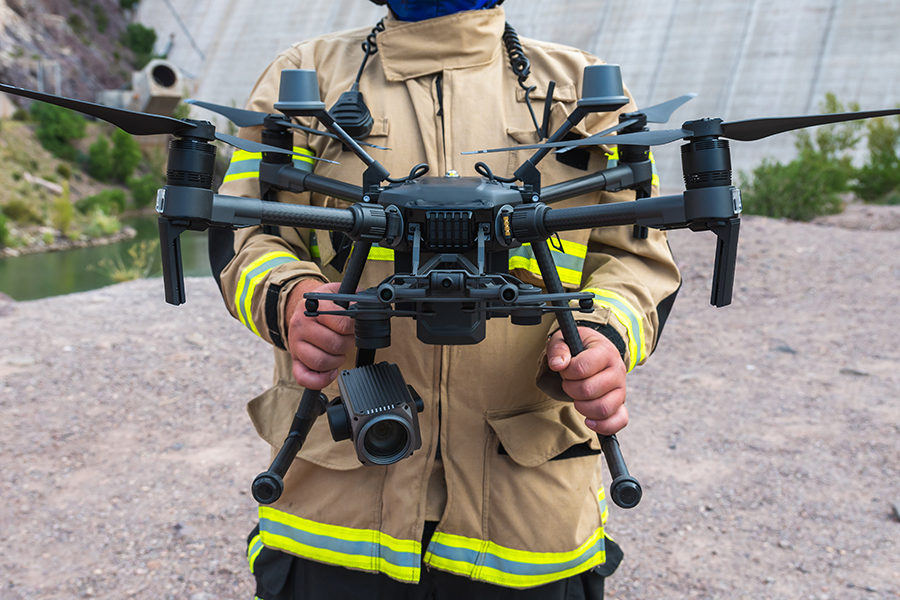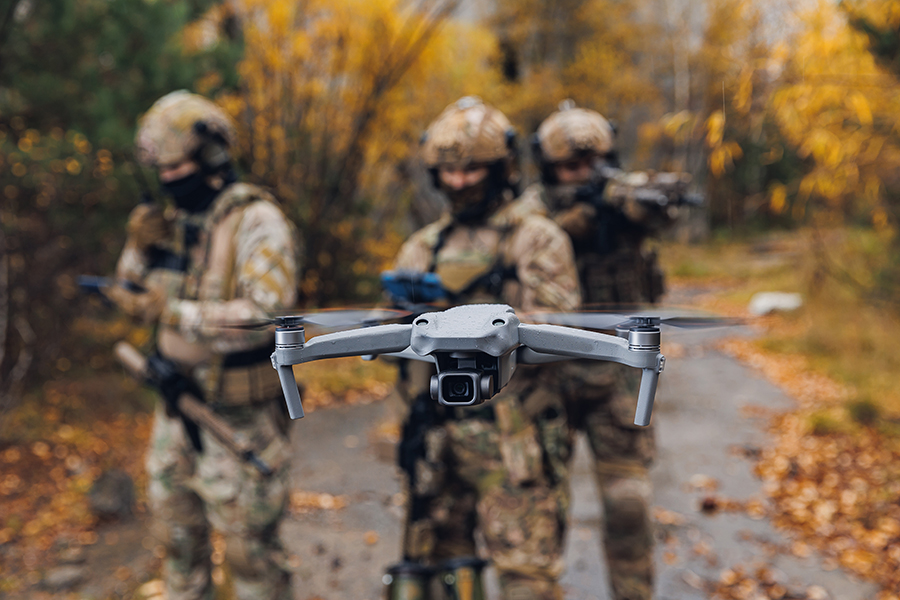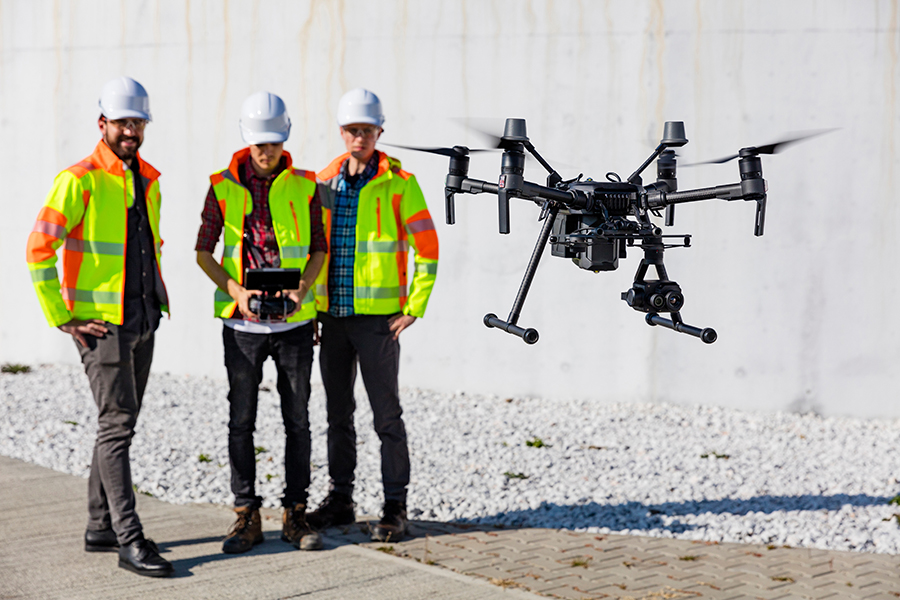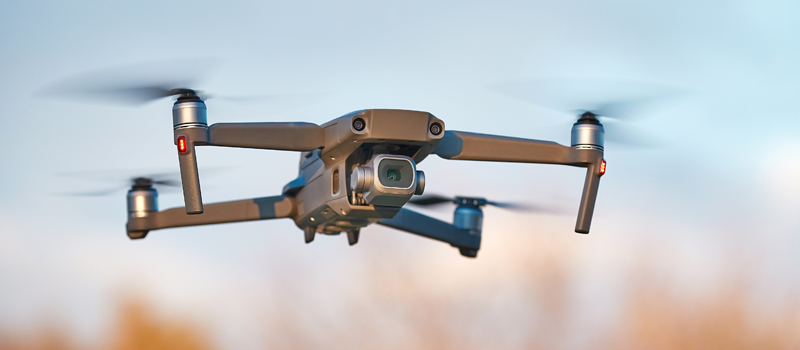-
What is the FAA’s current stance on BVLOS operations?
-
What is the nature of the requested BVLOS operations?
- Phoenix Air Unmanned
- uAvionix
- Zipline
- UPS Flight Forward
-
In what technical aspects of BVLOS operations can the public comment?
- 1. Detect and Avoid Systems Performance Standards
- 2. Declarations of Compliance for Detect and Avoid
- 3. Well-Clear Boundary
- 4. DAA System that Includes 3rd Party Services / Associated Elements
- 5. Use of UTM Systems for Strategic Deconfliction
- 6. Detect and Avoid Between Unmanned Aircraft
- 7. BVLOS Shielded Operations
-
Final Thoughts
The FAA has recently published a call for public comments on four requests to conduct BVLOS drone operations at or below 400 feet. The requests were made by four companies – Phoenix Air Unmanned, uAvionix, Zipline, and UPS Flight Forward.
The decision on these requests is going to be an important element in the FAA’s ongoing process of crafting the policy for BVLOS operations. The 20-day public comment period opened on May 25, 2023. Public comments can be submitted for each of the requests via the FAA’s official docket.
What is the FAA’s current stance on BVLOS operations?
The FAA is currently considering the expansion of BVLOS operations and is assessing requests individually. This comes side-by-side with a review of the recommendations of the UAS BVLOS Aviation Rulemaking Committee (ARC) which were submitted in March 2022.
The Final Report of the BVLOS ARC contained many important points and recommendations for crafting policy for BVLOS operations. The Report recommended several measures to make BVLOS operations safer, such as requiring “detect and avoid” technologies and establishing a regulatory pathway for the qualification of specific UAS models for BVLOS.
Rulemaking for BVLOS operations is still ongoing, and the FAA is currently collecting information from legally approved BVLOS operations to help in crafting the policy. For this reason, it is important for the drone community to make their voices heard at this stage of policymaking.
What is the nature of the requested BVLOS operations?
Each of the four requests is being made by a separate company. To make it easier to make comments, we shall attempt to summarize the details of each request:

Phoenix Air Unmanned
Phoenix Air Unmanned is requesting relief from BVLOS restrictions to conduct linear infrastructure operations, including aerial work, aerial photography, survey, and powerline and pipeline patrol and inspection. This will involve BVLOS operations and transient operations over people within the right of way.
Operations that do not meet the criteria for BVLOS due to population density, roadway congestion, proximity to airports, and/or restricted airspace may still be flown within VLOS of the PIC with certain restrictions.
The UAS to be operated for this request will be the SwissDrones SVO 50 V2.
uAvionix
uAvionix is requesting relief from BVLOS restrictions for the purpose of research and development of the Rapace electric vertical takeoff and landing (Evtol) UAS in accordance with Part 91.113(b) waiver provisions and operating limitations stipulated as part of Rapace’s Special Airworthiness Certificate in the Experimental Category.
Zipline
Zipline is requesting exemptions to conduct operations under Part 135 using UAS for medical cargo deliveries with a Part 199 carrier certificate in the United States.
UPS Flight Forward
UPS Flight Forward Inc. (UPSFF) is requesting exemptions from BVLOS restrictions for the planned expansion of the company’s air carrier operations under 14 CFR Part 11 employing the Matternet Inc M2 unmanned aircraft systems. In an effort to expand operations, UPSFF intends to transport items other than “medical supplies” but would fall under the overarching label of “package delivery.” The proposed amendments are supported by 21 continuous months of air carrier operations in the United States providing continued promotion and innovation of economic development of UAS.
In what technical aspects of BVLOS operations can the public comment?

As part of the public consultation process, the FAA has presented some of the issues still being deliberated concerning BVLOS operations. These are summarized as follows:
1. Detect and Avoid Systems Performance Standards
The FAA is currently reviewing several industry standards that may be useful in defining the performance of Detect and Avoid (DAA) systems. However, any single standard may not be fully appropriate for the uses intended by applicants operating at and below 400 feet AGL.
Provided that a combination of standards will be applied, the pertinent questions are as follows:
- In which circumstances or operating environments should the FAA allow this combination approach?
- Are there circumstances or operating environments where no combination of current standards would provide an acceptable level of safety?
2. Declarations of Compliance for Detect and Avoid
The FAA is considering allowing operators to declare that they are using a DAA system that meets the standards as indicated in Item 1. Should this be the case:
- In which circumstances should the FAA allow this declaration approach? What supporting documents or data should the FAA require prior to authorization to operate under an exemption?
- Are there circumstances or environments in which the FAA should require operators to submit details of their DAA systems for approval and validation prior to operation?
3. Well-Clear Boundary
ASTM F3442/F3442M–23, Standard Specification for Detect and Avoid System Performance Requirements is one of the standards referred to in Item 1. This standard recommends maintaining a hockey puck-shaped buffer airspace surrounding a small UAS, measuring 2000 feet horizontally and 250 feet vertically.
- In which circumstances or environments would this standard be appropriate?
- If not this standard, what well-clear boundary should be implemented for operations under an exemption, and under what circumstances or operating environments?
4. DAA System that Includes 3rd Party Services / Associated Elements
The FAA understands that some DAA system components are intended to be reused by multiple operators. In some situations, these are controlled by third-party service providers. For example, such services can detect crewed aircraft within an identified geographic region or by relaying information through a managed command and control link on behalf of multiple operators.
The FAA is considering new ways to evaluate and recognize these components as distinct elements. Moreover, the evaluation of certain UAS Traffic Management (UTM) services is part of the duties of the FAA to ensure that they may operate safely in the national airspace system before the completion of an implementation plan.
- In order to operate, the UTM service provider would need to receive approval from the FAA. The applicant’s exemption would then be contingent on the use of an approved service. Other operators would have to present their specific use case of the approved UTM service. Should the FAA separate the approval of the UTM service provider from the exemption?
- Conversely, the FAA is considering including the approval of the UTM service within the exemption. Should the FAA consolidate these approvals?
5. Use of UTM Systems for Strategic Deconfliction
At present, the FAA has not yet determined an acceptable level of risk for collision between two UAs. However, the FAA is concerned that this can be more likely with increased numbers of BVLOS operations. This can result in falling debris and cause property damage or physical injuries to non-participants on the ground.

The FAA is currently deliberating between three proposals for UAS deconfliction systems:
- A requirement that all BVLOS operations in controlled airspace or within the lateral limits of a Mode C Veil under an exemption to use a strategic deconfliction and conformance monitoring capability. This could be fulfilled if the operator provisions their own capability that meets the requirement of a published standard.
- A requirement that all BVLOS operations under an exemption (including in Class G airspace) use a strategic deconfliction and conformance monitoring capability.
- ASTM F3548–21, Standard Specification for UAS Traffic Management (UTM) UAS Service Supplier (USS) Interoperability, is a published standard that can be used to meet the requirement to have a strategic deconfliction and conformance monitoring capability.
The pertinent questions for this topic become – which requirement should the FAA impose for UAS deconfliction? What alternative means exist (preferably using published standards) that the FAA should consider? What evidence exists for the safety benefit and operation efficiency of any alternative means?
6. Detect and Avoid Between Unmanned Aircraft
The FAA views strategic deconfliction and conformance monitoring as two layers of a new, conceptual conflict management strategy for UAS. It is also considering requiring a third layer, in the form of detect-and-avoid between UA, leveraging some form of vehicle-to-vehicle communications method.
- A proposal is to use the ACAS sXu standard (RTCA DO-396). Should the FAA impose this requirement, including the use of a specific communications method? Why or why not?
- What evidence exists that the standard mentioned above would sufficiently manage the risk of collision between UA?
- If the FAA imposes a requirement for UA-to-UA detection and avoidance, should it also prescribe technical requirements to ensure interoperability between all BVLOS UAS?
7. BVLOS Shielded Operations
The BVLOS ARC report proposed labeling certain types of BVLOS operations as shielded operations. This will refer to operations occurring in a shielded area defined as “a volume of airspace that includes 100 feet above the vertical extent of an obstacle or critical infrastructure and within 100 feet of the lateral extent of the same obstacle or critical infrastructure.”
The ARC recommends that shielded operations be given right-of-way privileges based on the unique nature of those operations and the limited likelihood of crewed operations in the specified areas.
Based on this proposal, the FAA would like comments on the following questions:
- In which circumstances or environments should the FAA authorize shielded operations? Conversely, are there circumstances or environments in which the FAA should not authorize shielded operations?
- The 42 U.S.C. 5195(c) definition of critical infrastructure has broad applicability. Should the FAA further limit or expand the applicability?
- The ARC report proposes an appropriate offset of 100 feet above and 100 feet lateral distance. Is this standard appropriate? If not, what other standard should be used, and what evidence supports the appropriateness and safety of an alternative standard?
- What type of notification (e.g., email, phone call, web portal, mobile phone app, etc.) should operators conducting BVLOS operations provide to local aviation communities?
Final Thoughts
The process of developing the rules for BVLOS drone operations is moving slowly, but it is progressing. The FAA’s evaluation of these four requests will play a huge role in gathering information that will make the BVLOS policy practical, realistic, and safe. The latest public comment period is a great chance for the drone community to make their voices heard on a policy that will shape the future of drone operations.
Make sure to check the FAA docket and get your comments in before the 20-day public comment period expires.



